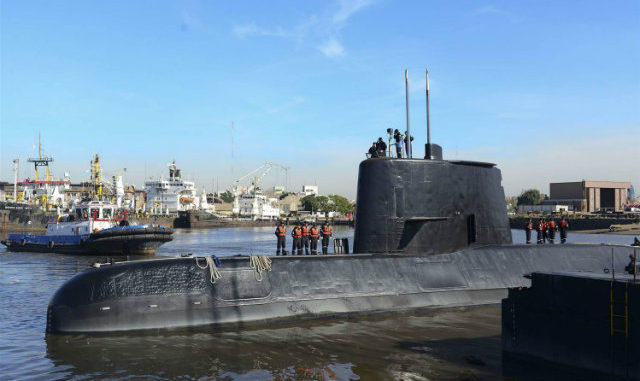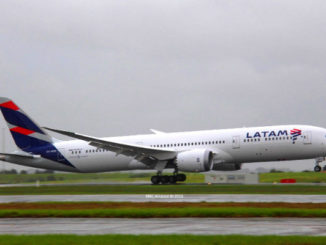
BUENOS AIRES – A U.S. Navy rescue crew from San Diego has joined the international search effort for a Argentine submarine and its 44 crew members missing for several days beneath the stormy southern Atlantic Ocean.
Navy sailors with Undersea Rescue Command (URC) departed Miramar Saturday with a Submarine Rescue Chamber (SRC) and four aircraft, en route to where the ARA San Juan lost contact with the Argentine Navy Wednesday.
As waves of up to 20 feet complicated the search, authorities spent Sunday analyzing data from possible satellite calls that were thought to have been made from the vessel.
The U.S. Navy also has deployed unmanned underwater vehicles, which can search a wide swath of the ocean using sonar technology.
The Bluefin 12D, one of the unmanned vehicles, can search at a maximum depth of almost 5,000 feet for 30 hours.
#BREAKING: #USNavy deploys unmanned submersibles in Argentine submarine search – https://t.co/kq1F8nzriP (File photo) pic.twitter.com/Z0s0GN78LF
— U.S. Navy (@USNavy) November 20, 2017
Other countries aiding in the search are Brazil, Britain, Chile and Uruguay.
Last week, the Royal Navy deployed ice patrol ship HMS Protector to help search for the submarine.
A spokesman for the British Navy said: “Following a request from the Argentine government, HMS Protector has been deployed to join the search and rescue effort for the ARA San Juan.”

Powerful winds and waves up to six meters high have made exploration exceptionally difficult, according to Argentine navy spokesman Enrique Balbi.
Britain also has an C-130 Hercules, which is stationed in the Falklands Islands, on standby if required.
The ARA San Juan last gave its location on Wednesday and Mr. Balbi has explained that the weather is complicating efforts, which are taking place both above and below the surface
“Detection has been difficult despite the quantity of boats and aircraft” involved in the search, Mr Balbi said. He said the vessel may be suffering from a communications error.
“We are investigating the reasons for the lack of communication. If there was a communication problem, the boat would have to come to the surface,” he added.
Navy spokesperson Balbi said the submarine, which left the city of Ushuaia in Tierra del Fuego for it base in Mar del Plata, more than 1,800 miles away, has food supply for several days and is likely to continue its journey despite the problem.
The German built ARA San Juan, the 66m long, diesel-electric vessel was subjected to complex repair and engineering work in 2008, which the country’s navy believed would extend its life by 30 years. She was delivered to Argentina in 1985.

Argentina’s President Mauricio Macri said the government was in contact with the crew’s families, and pledged to provide all the needed resources for the search.
“We share their concern and that of all Argentines,” he wrote on Twitter. “We are committed to using all national and international resources necessary to find the ARA San Juan submarine as soon as possible.”
Pope Francis, who is from Argentina, has also offered his “fervent prayers” for the 44 crew members via a telegram to a senior bishop in the country. The Pope expressed his spiritual closeness to the families of the sailors, as well as the military and civil authorities in Argentina.
The Falkland Islands government in an official release extended its hopes that the submarine is found swiftly.
“The Argentine Navy has lost contact with one of its submarines, the ARA San Juan, which had been operating in the South Atlantic. We understand that the British government has offered the assistance of the British Armed Forces in the search, and that it has joined an international effort which also includes the United States. The Falkland Island Government extends its sincere hope that the submarine is found swiftly”.–MercoPress



